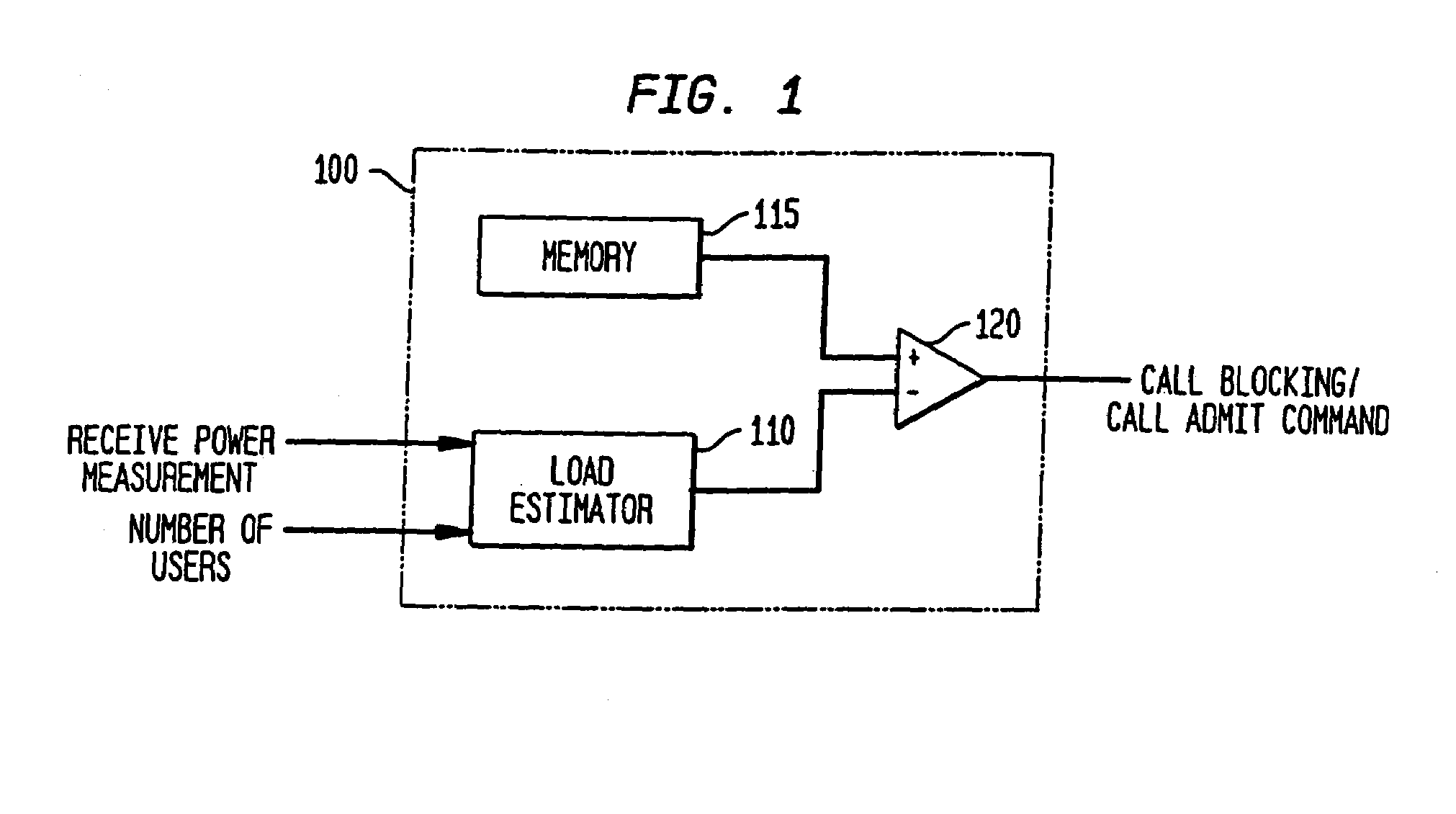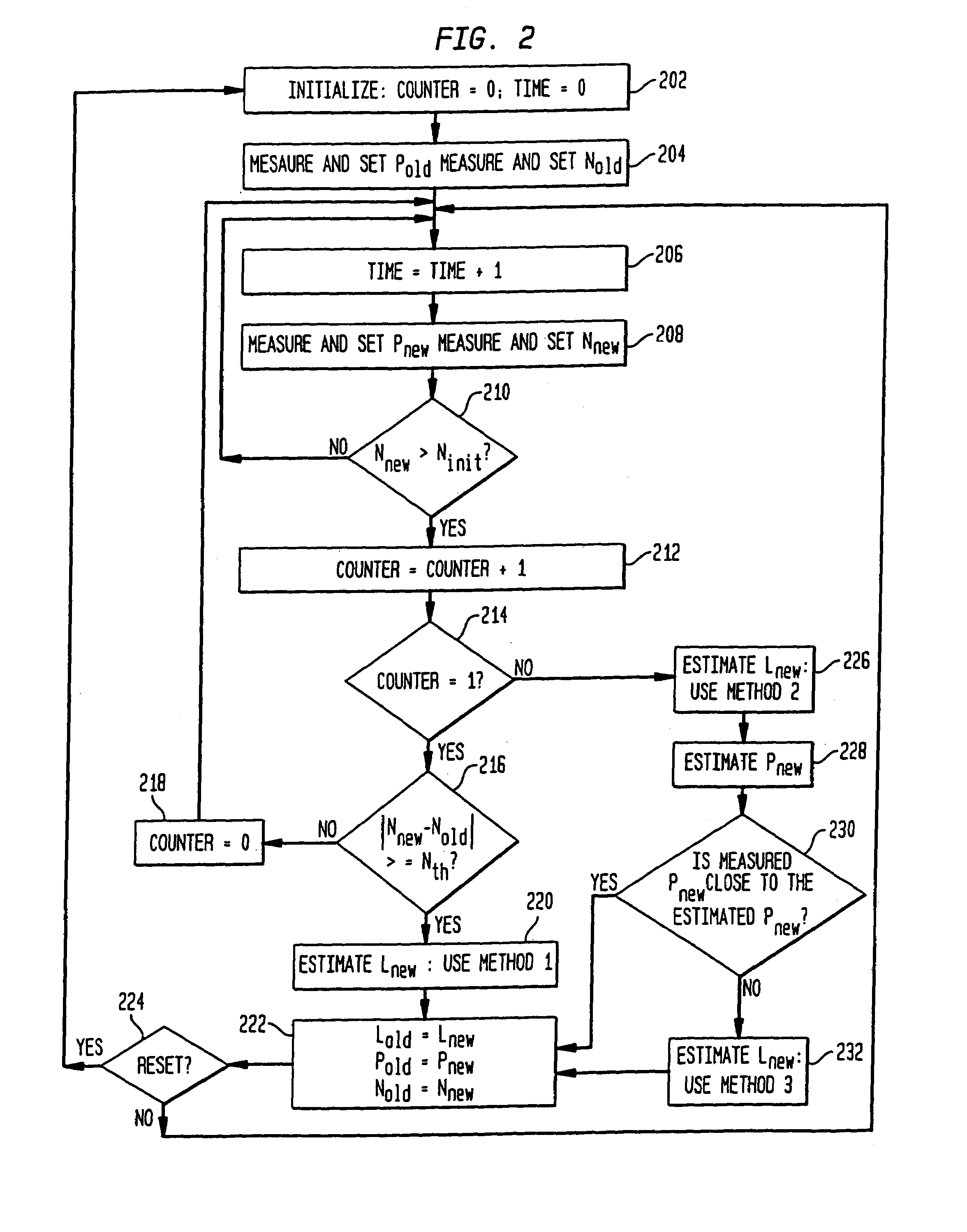System and method for reverse link overload control
- Summary
- Abstract
- Description
- Claims
- Application Information
AI Technical Summary
Benefits of technology
Problems solved by technology
Method used
Image
Examples
Embodiment Construction
[0021]The present invention is a system and method for controlling call admission in a wireless communications network which estimates load levels as a function of changes in base station receive power and / or the number of users. In one embodiment, the present invention is a call admission controller of a wireless network base station, such as a CDMA base station, which utilizes a first load level estimating method to generate an initial load level estimate, and at least one additional load level estimating method to recursively update load level estimates as a function of changes in the number of users and / or base station receive power measurements. An illustrative embodiment of a system and method for controlling call admission in a wireless communications network according to the present invention is described below.
[0022]Referring to FIG. 1, there is shown a call admission controller 100 which includes a load estimator 110, a memory unit 115, and a comparator 120. The load estim...
PUM
 Login to View More
Login to View More Abstract
Description
Claims
Application Information
 Login to View More
Login to View More - R&D
- Intellectual Property
- Life Sciences
- Materials
- Tech Scout
- Unparalleled Data Quality
- Higher Quality Content
- 60% Fewer Hallucinations
Browse by: Latest US Patents, China's latest patents, Technical Efficacy Thesaurus, Application Domain, Technology Topic, Popular Technical Reports.
© 2025 PatSnap. All rights reserved.Legal|Privacy policy|Modern Slavery Act Transparency Statement|Sitemap|About US| Contact US: help@patsnap.com



